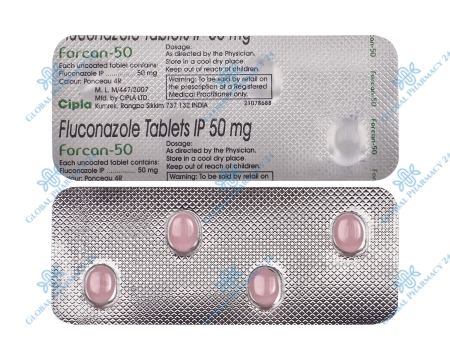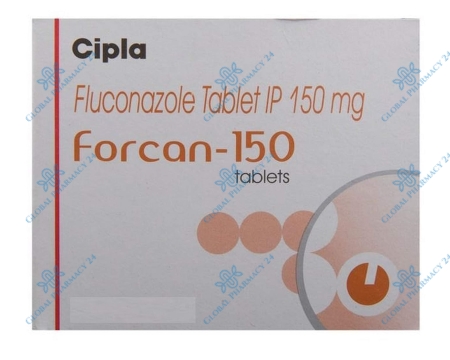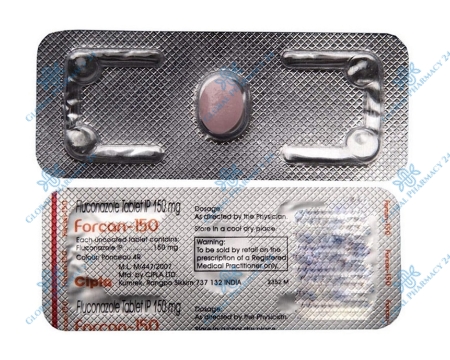| Characteristic | Detail |
|---|---|
| Active Ingredient | Fluconazole |
| Indications | Fungal Infections |
| Dosage Form | Tablets and Injection |
| Strengths | 50mg, 100mg, 150mg, 200mg |
| Duration of Action | 24-48 hours |
| Side Effects | Headache, nausea, dizziness, stomach pain |
Understanding Forcan's Mechanism of Action
Forcan, with its active ingredient fluconazole, belongs to a class of medications known as triazole antifungal agents. It operates by inhibiting the synthesis of ergosterol, a critical component of fungal cell membranes, thereby disrupting fungal cell membrane formation and leading to the death of the fungal cell. This mechanism makes Forcan effective against a wide range of fungal infections.
Its broad antifungal activity includes treatment for both systemic and superficial fungal infections. Forcan is particularly effective in the treatment of candidiasis, cryptococcal meningitis, and other fungal infections caused by susceptible strains. Its efficacy and the convenience of dosage forms, ranging from oral tablets to injections, contribute to its widespread use in clinical settings.
Forcan's Advantages Over Other Antifungal Medications
Forcan stands out in the antifungal medication market for its potent efficacy, wide spectrum of action, and the convenience of a single-dose treatment for vaginal yeast infections. This unique aspect, coupled with its excellent bioavailability and penetration into body fluids and tissues, makes it a preferred choice for doctors and patients alike.
Unlike some other antifungal treatments that require multiple daily doses over a span of days or weeks, Forcan offers a more patient-friendly regimen, particularly for treating uncomplicated cases, which enhances compliance and treatment outcomes. Its safety profile, which is generally well-tolerated by most patients, further underscores its benefits in managing fungal infections effectively.
- Pros:
- Effective against a wide range of fungal infections
- Convenient dosing regimen
- High bioavailability
- Good safety profile
- Cons:
- Potential for drug interactions
- Side effects include headache, nausea, and dizziness
- Not recommended for patients with certain pre-existing conditions
Dosage and Administration
The dosage of Forcan varies depending on the type and severity of the fungal infection. For uncomplicated vaginal candidiasis, a single 150 mg dose of oral fluconazole is typically sufficient. However, more severe or systemic infections may require higher doses or prolonged therapy. It is crucial for patients to follow their healthcare provider's instructions precisely to ensure the best possible outcomes.
Forcan can be taken with or without food. The tablets should be swallowed whole with a glass of water. In cases where oral administration is not feasible, Forcan is available in an injectable form that can be administered by a healthcare professional. Dosage adjustments may be necessary for patients with renal impairment, emphasizing the importance of medical supervision during treatment.
Potential Side Effects and Precautions
While Forcan is generally well-tolerated, some patients may experience side effects such as headache, nausea, dizziness, and abdominal pain. Rarely, more severe reactions like liver damage, severe skin reactions, or QT prolongation on the ECG may occur. Patients should report any unusual symptoms to their doctor immediately.
Forcan should be used with caution in patients with pre-existing liver or kidney disease, and its use during pregnancy is advised only when the benefits outweigh the risks. As with all medications, adherence to prescribed dosages and duration of therapy is essential to minimize the risk of adverse effects and the development of drug-resistant fungal strains.
FAQs Forcan
What is Forcan?
Forcan is a medication primarily used to treat fungal infections.
How does Forcan work?
Forcan works by interfering with the synthesis of the fungal cell membrane, ultimately leading to the death of the fungus.
What conditions can Forcan treat?
Forcan is commonly used to treat infections such as yeast infections, oral thrush, and fungal skin infections.
How should I take Forcan?
Forcan is usually taken orally, with or without food, as directed by your healthcare provider. Follow the prescribed dosage and duration of treatment.
What are the possible side effects of Forcan?
Common side effects of Forcan may include nausea, vomiting, diarrhea, headache, and rash. If you experience severe side effects or allergic reactions, seek medical attention immediately.
Can I take Forcan if I'm pregnant or breastfeeding?
It's essential to consult with your healthcare provider before taking Forcan if you are pregnant or breastfeeding, as it may not be suitable for use in certain situations.
Are there any medications that interact with Forcan?
Forcan may interact with certain medications, including blood thinners, certain antifungal medications, and certain antidepressants. Inform your healthcare provider about all medications you are currently taking before starting Forcan.



























